
The Enchanting Hoge Veluwe National Park
Discover the diverse landscapes and cultural treasures of Hoge Veluwe National Park, the largest continuous nature reserve in the Netherlands.
Hoge Veluwe National Park is a vast natural reserve located in the Netherlands. Spanning across 5,400 hectares, it is the largest continuous nature reserve in the country. This park is renowned for its diverse landscapes that include dense forests, expansive heathlands, and shifting sand dunes. Whether you are a nature lover, an art enthusiast, or a history buff, Hoge Veluwe has something for everyone. One of the unique aspects of the park is the White Bicycles. Visitors can use these free bikes to explore the park’s extensive network of trails. This makes it easy to see the various landscapes and observe wildlife such as deer, wild boars, and numerous bird species. The park also hosts several visitor centers that provide information on the local flora and fauna, making it an educational experience for all ages. In the heart of the park lies the Kröller-Müller Museum, which houses an impressive collection of modern art, including works by Vincent van Gogh. The museum itself is set in a beautiful sculpture garden, making it a cultural gem within the natural beauty of the park. Additionally, the park features the historic Jachthuis Sint Hubertus, a hunting lodge designed by the famous architect Hendrik Petrus Berlage. Hoge Veluwe National Park is not only a haven for outdoor enthusiasts but also a place of cultural and historical significance. Its blend of natural beauty and cultural treasures makes it a must-visit destination in the Netherlands.
Local tips in Hoge Veluwe National Park
- Start your visit early in the morning to avoid crowds and have a better chance of spotting wildlife.
- Take advantage of the free White Bicycles to explore the park at your own pace.
- Don't miss the Kröller-Müller Museum for an impressive collection of modern art.
- Pack a picnic and enjoy it at one of the many scenic spots throughout the park.
- Wear comfortable walking shoes as the park has extensive trails that are best enjoyed on foot.
- Visit the visitor centers to learn more about the park’s ecosystems and wildlife.
The Enchanting Hoge Veluwe National Park
Hoge Veluwe National Park is a vast natural reserve located in the Netherlands. Spanning across 5,400 hectares, it is the largest continuous nature reserve in the country. This park is renowned for its diverse landscapes that include dense forests, expansive heathlands, and shifting sand dunes. Whether you are a nature lover, an art enthusiast, or a history buff, Hoge Veluwe has something for everyone. One of the unique aspects of the park is the White Bicycles. Visitors can use these free bikes to explore the park’s extensive network of trails. This makes it easy to see the various landscapes and observe wildlife such as deer, wild boars, and numerous bird species. The park also hosts several visitor centers that provide information on the local flora and fauna, making it an educational experience for all ages. In the heart of the park lies the Kröller-Müller Museum, which houses an impressive collection of modern art, including works by Vincent van Gogh. The museum itself is set in a beautiful sculpture garden, making it a cultural gem within the natural beauty of the park. Additionally, the park features the historic Jachthuis Sint Hubertus, a hunting lodge designed by the famous architect Hendrik Petrus Berlage. Hoge Veluwe National Park is not only a haven for outdoor enthusiasts but also a place of cultural and historical significance. Its blend of natural beauty and cultural treasures makes it a must-visit destination in the Netherlands.
When is the best time to go to Hoge Veluwe National Park?
Iconic landmarks you can’t miss
Het Nationale Park De Hoge Veluwe
Explore Het Nationale Park De Hoge Veluwe, a stunning national park in the Netherlands, rich in wildlife, diverse landscapes, and cultural treasures.
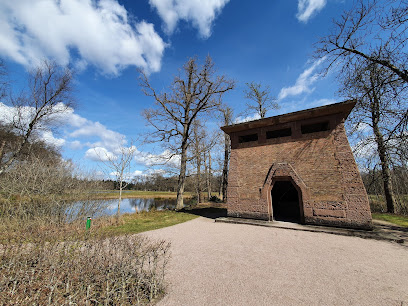
Kröller-Müller Museum
Explore the Kröller-Müller Museum, a fusion of modern art and nature in Hoge Veluwe National Park, showcasing Van Gogh's masterpieces and stunning sculptures.
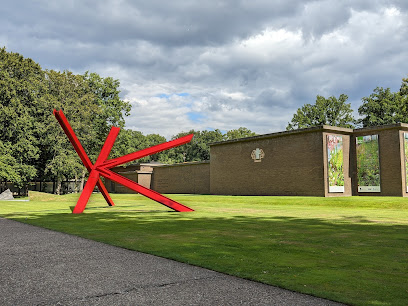
Nationaal Park Veluwezoom
Explore the breathtaking landscapes and rich biodiversity of Nationaal Park Veluwezoom, a top destination for nature lovers and outdoor enthusiasts.
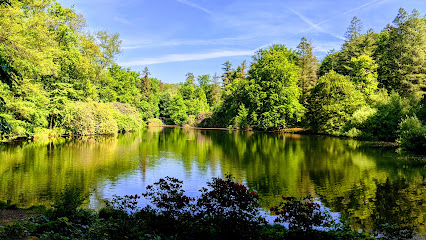
Paleispark Kroondomein Het Loo
Discover the enchanting beauty and royal history of Paleispark Kroondomein Het Loo in Apeldoorn, a serene park perfect for nature lovers and cultural explorers alike.
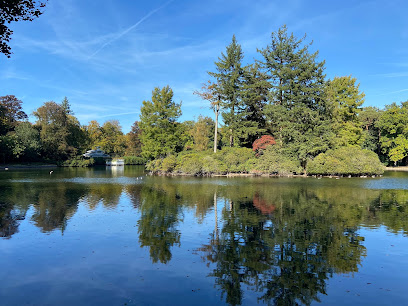
Veluwe
Discover Veluwe: A breathtaking Dutch landscape of woodlands, heathlands, and wildlife that offers endless outdoor adventures and serene retreats.
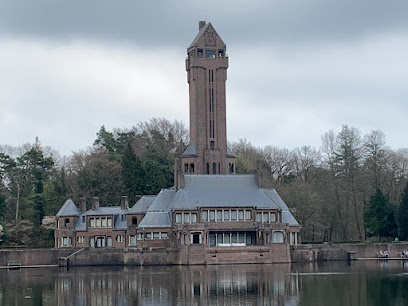
Country Residence Museum Jachthuis Sint Hubertus
Discover the exquisite blend of art, architecture, and nature at Jachthuis Sint Hubertus in Hoge Veluwe National Park.
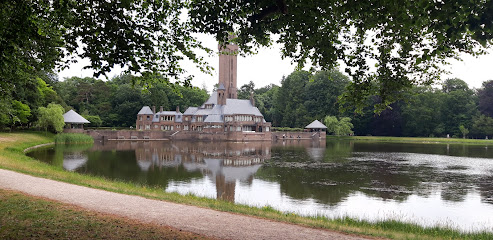
Loenense waterval
Experience the serene beauty of Loenense Waterval, a must-visit natural attraction in the Netherlands offering picturesque trails and breathtaking waterfalls.
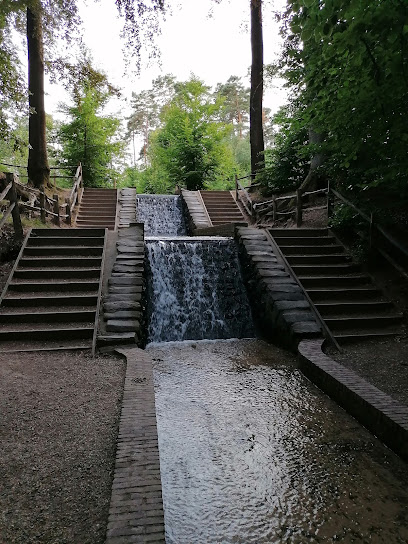
Uitkijktoren Kootwijkerzand
Discover the breathtaking vistas and natural beauty of Uitkijktoren Kootwijkerzand, a captivating observation deck in the Veluwe region.
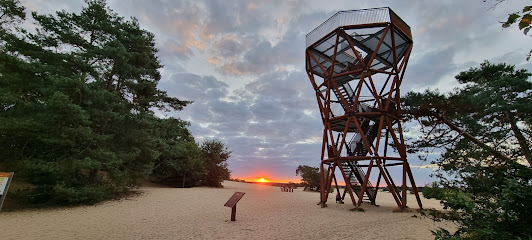
Bostoren
Experience breathtaking views from the Bostoren in Putten, a must-visit tourist attraction showcasing the beauty of Dutch landscapes.
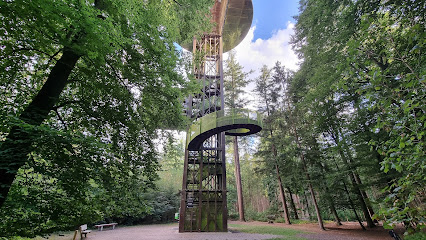
estate Schovenhorst
Explore the serene trails and vibrant landscapes of Estate Schovenhorst, a perfect hiking retreat in Putten's picturesque countryside.
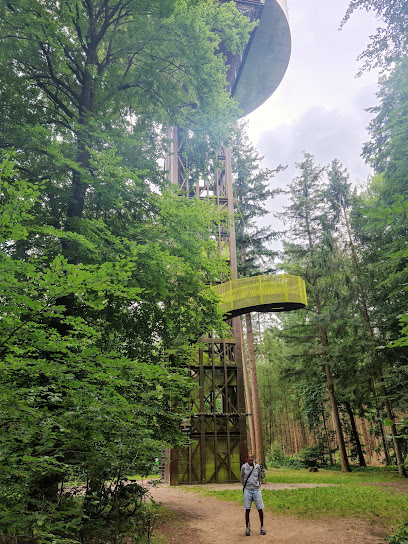
Planken Wambuis
Discover the serene landscapes of Planken Wambuis, a nature preserve in the Veluwe, perfect for hiking, wildlife watching, and unwinding in nature.
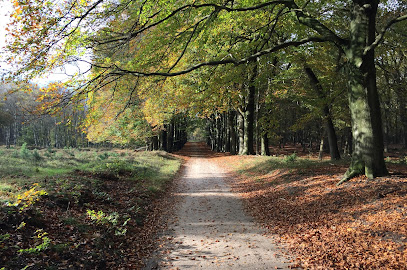
Museonder
Explore Museonder, a unique museum nestled in Hoge Veluwe National Park, showcasing nature's wonders and promoting environmental awareness.
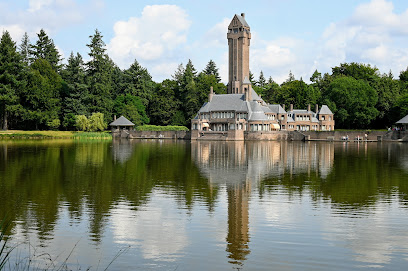
Het Kootwijkerzand
Explore the breathtaking landscapes and rich biodiversity of Het Kootwijkerzand, a unique nature preserve perfect for outdoor adventures and relaxation.

Estate Beekhuizen
Discover the natural beauty and tranquil hiking trails of Estate Beekhuizen, a must-visit destination for nature lovers in the Netherlands.
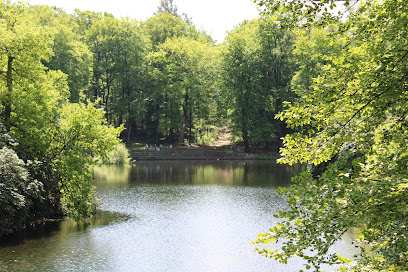
Kasteel Oldenaller
Experience the charm of Kasteel Oldenaller, a captivating castle surrounded by scenic hiking trails and lush gardens in the heart of Putten, Netherlands.
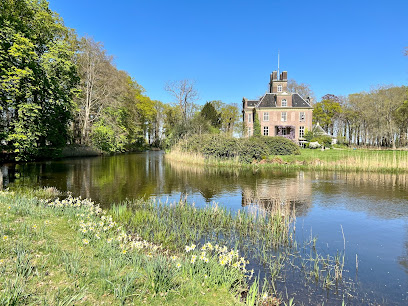
Unmissable attractions to see
Burgers' Zoo
Discover the immersive ecosystems and diverse wildlife at Burgers' Zoo in Arnhem, Netherlands—a family-friendly adventure awaits!
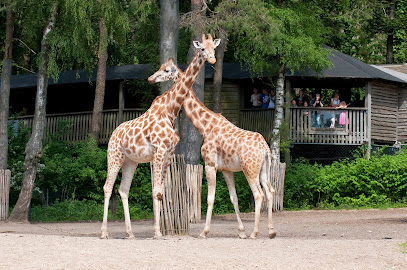
Apenheul
Experience the wonders of primates at Apenheul Zoo in Apeldoorn, a unique wildlife attraction perfect for families and animal lovers.
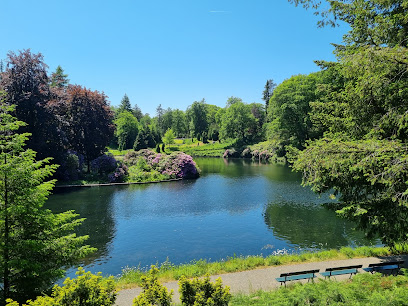
Klimbos Garderen
Discover the thrill of tree climbing and zip-lining at Klimbos Garderen, the ultimate outdoor amusement park for adventurers of all ages in the Netherlands.
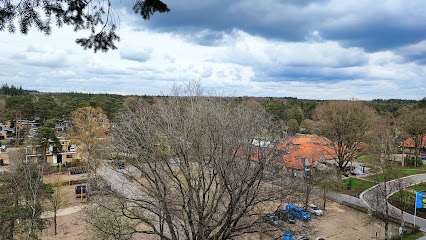
Valkhof Museum
Explore the Valkhof Museum in Nijmegen, a treasure trove of Roman history and contemporary art, set against a stunning riverside backdrop.
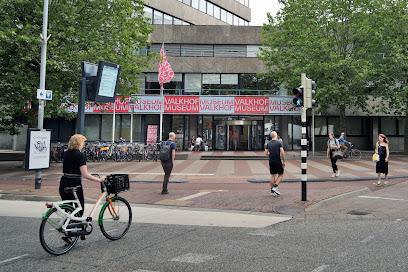
Kasteel en park Rosendael
Explore the enchanting Kasteel en Park Rosendael, a historical castle surrounded by stunning gardens and rich heritage in Rozendaal, Netherlands.
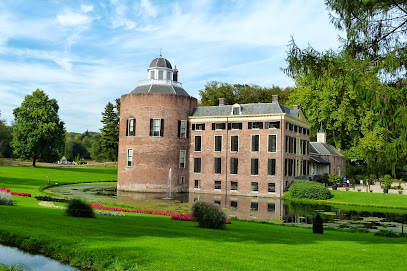
Oranjepark
Experience the serene beauty of Oranjepark, a picturesque haven in Apeldoorn perfect for relaxation, picnics, and outdoor activities.

Park Zypendaal
Experience the natural beauty and rich history of Park Zypendaal, a serene escape in Arnhem perfect for nature lovers and families.
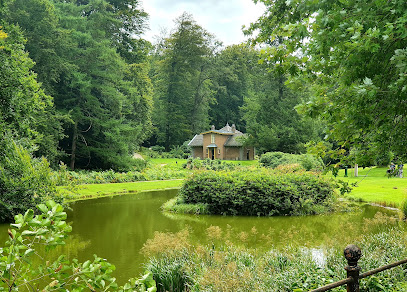
De Bastei
Discover the captivating history and stunning views at De Bastei, Nijmegen's premier museum and cultural attraction.
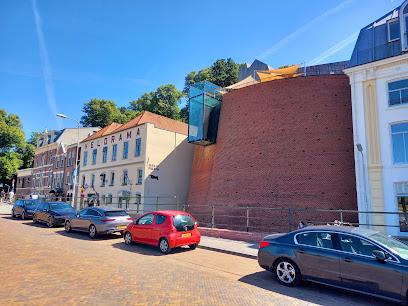
Natuurcentrum Veluwe
Explore the stunning landscapes and rich biodiversity at Natuurcentrum Veluwe, a must-visit tourist attraction in the heart of the Veluwe region.
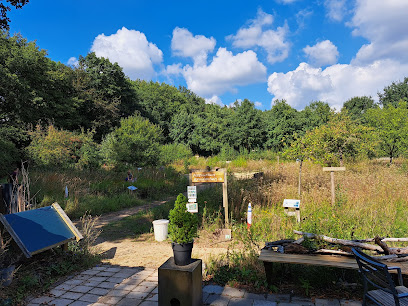
The resort Lorkenbos
Experience nature's tranquility at Lorkenbos Resort in Otterlo, where adventure meets relaxation in the heart of the Veluwe region.
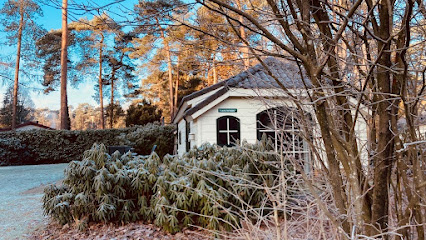
Airborne Monument Ginkelse Heide
Discover the Airborne Monument Ginkelse Heide, a historical landmark honoring World War II heroes amidst breathtaking natural beauty in Ede, Netherlands.
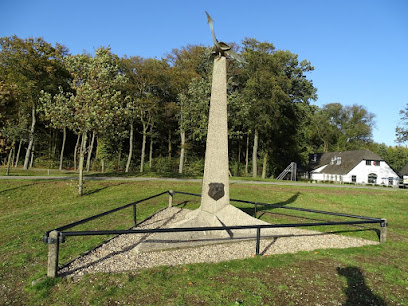
Nationaal Fietsmuseum Velorama
Explore cycling history at the National Bicycle Museum Velorama in Nijmegen, showcasing unique bikes and engaging exhibits celebrating Dutch cycling culture.

Museum Vliegbasis Deelen
Explore the intriguing history of aviation and military heritage at Museum Vliegbasis Deelen, a must-visit destination for history buffs and adventure seekers.
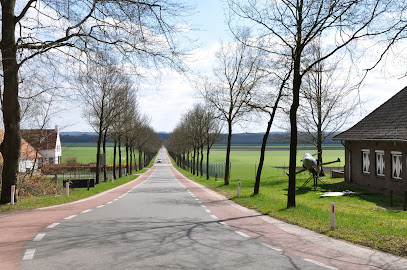
Ingang Hoenderloo Nationaal Park De Hoge Veluwe
Explore the diverse landscapes, rich wildlife, and cultural treasures of De Hoge Veluwe National Park, a natural gem in the Netherlands.
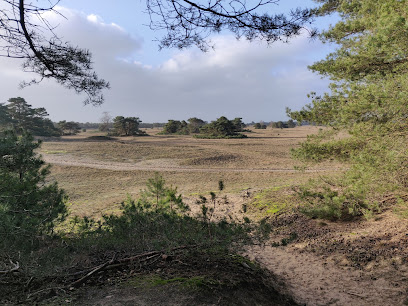
Huis Zypendaal
Experience the elegance of Huis Zypendaal, a historical castle in Arnhem, surrounded by beautiful gardens and rich Dutch heritage.

Essential places to dine
Pannenkoekenhuis Den Strooper
Discover delectable pancakes and crepes at Pannenkoekenhuis Den Strooper in Arnhem - where flavor meets tradition!
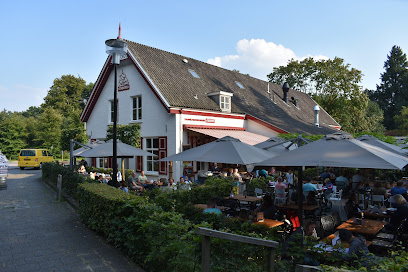
De Waldhoorn
Experience authentic Dutch cuisine at De Waldhoorn in Otterlo, where local flavors meet cozy hospitality.
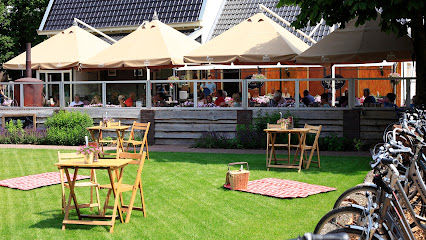
Pavilion De Posbank
Discover Pavilion De Posbank - where exquisite dining meets breathtaking views in Veluwezoom National Park.
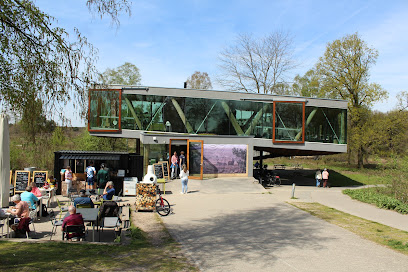
Buitenplaats Het Loo
Discover the culinary charm of Buitenplaats Het Loo, where delightful meat dishes meet delicious pancakes in a serene setting.
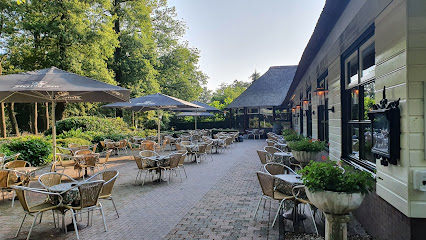
De Carolinahoeve
Experience culinary delights at De Carolinahoeve amidst the stunning natural beauty of Veluwezoom National Park.
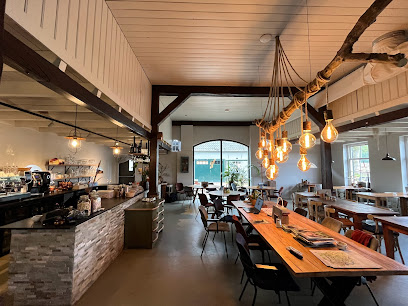
Brunch Hoenderloo
Experience delightful brunches and exquisite ice creams amidst nature's beauty at Brunch Hoenderloo.
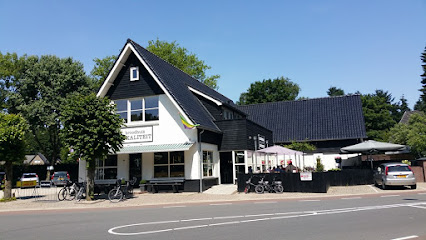
Restaurant De Veluwse Berg
Experience exquisite Dutch cuisine amidst the serene beauty of Heerde at Restaurant De Veluwse Berg.
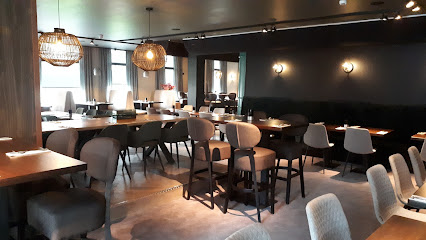
Brasserie Délicat
Experience exquisite Dutch cuisine at Brasserie Délicat in Hoenderloo – where local flavors meet warm hospitality.
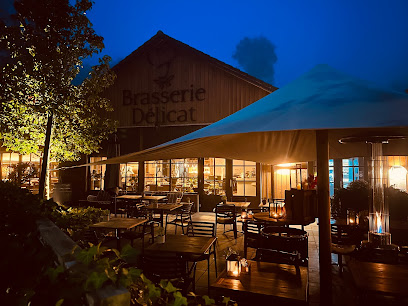
Restaurant De Veluwe
Experience authentic Dutch cuisine at Restaurant De Veluwe, where seasonal ingredients meet warm hospitality in Hoenderloo.
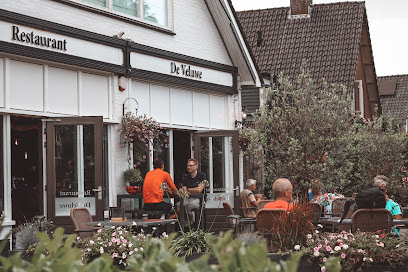
Hotel de Sterrenberg | Otterlo, Veluwe
Discover comfort and nature at Hotel de Sterrenberg in Otterlo – your gateway to Veluwe's stunning landscapes.
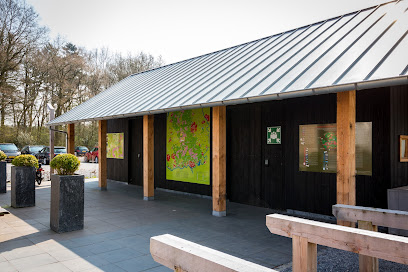
Dorpsherberg De Roskam
Experience authentic Dutch hospitality at Dorpsherberg De Roskam in Nunspeet - where delicious food meets cozy accommodations.
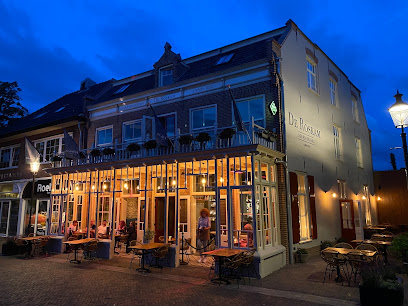
de Wever Lodge
Experience serene stays and exquisite dining at de Wever Lodge in Otterlo - your gateway to nature's beauty and local flavors.
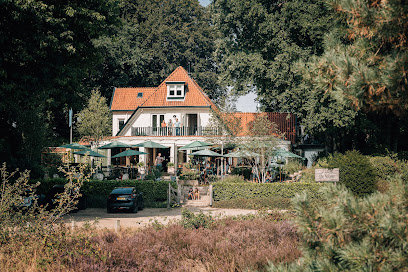
Restaurant De Houtzagerij
Experience family-friendly dining at Restaurant De Houtzagerij in Otterlo – where culinary excellence meets cozy ambiance.
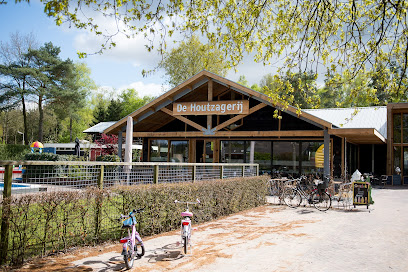
Brasserie Schovenhorst
Experience authentic Dutch cuisine at Brasserie Schovenhorst in Putten, where local flavors meet serene surroundings for an unforgettable dining adventure.
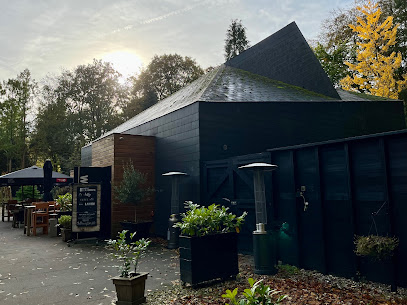
Herberg De Boer'Nkinkel
Discover serene accommodations and exquisite dining at Herberg De Boer'Nkinkel, your gateway to exploring Hoge Veluwe National Park.
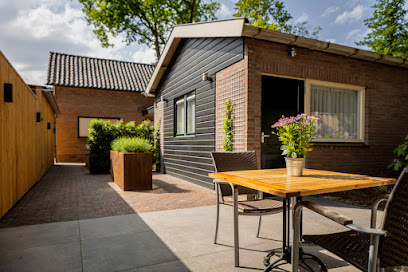
Markets, malls and hidden boutiques
Het Nationale Park De Hoge Veluwe
Explore the vast natural beauty and rich cultural history of Het Nationale Park De Hoge Veluwe, a premier destination for nature lovers and art enthusiasts alike.
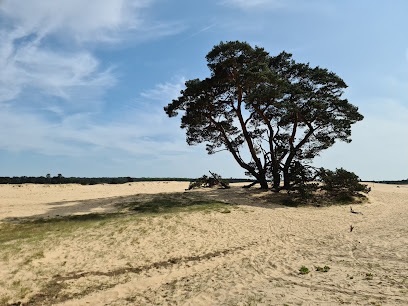
Ingang Hoenderloo Nationaal Park De Hoge Veluwe
Explore the breathtaking landscapes and rich cultural heritage of De Hoge Veluwe National Park, a Dutch natural treasure.
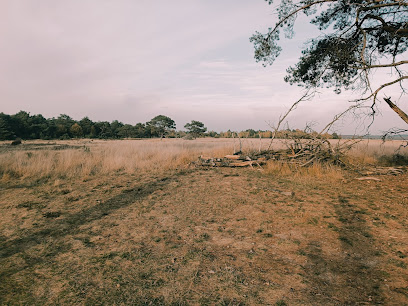
Ingang Otterlo Nationaal Park De Hoge Veluwe
Explore the beauty of De Hoge Veluwe National Park, a natural paradise filled with diverse wildlife, cycling paths, and art treasures.

Park Paviljoen
Discover a culinary oasis at Park Paviljoen, where fine dining meets the breathtaking beauty of De Hoge Veluwe National Park.
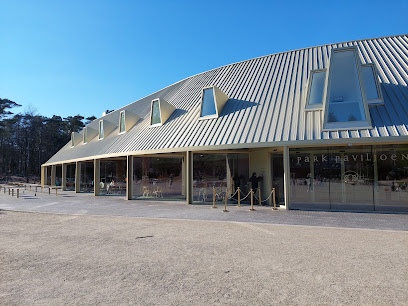
De Beste Mannen Cadeaus
Explore De Beste Mannen Cadeaus, a unique gift shop offering a delightful selection of presents for men. Perfect for memorable souvenirs and special occasions.
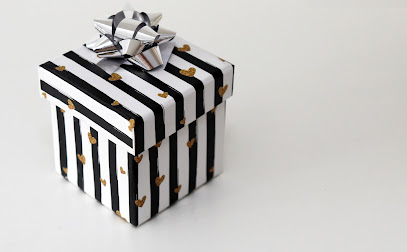
Candle Cocktail
Explore the magical world of hand-crafted candles at Candle Cocktail, where unique scents and enchanting designs await every visitor.
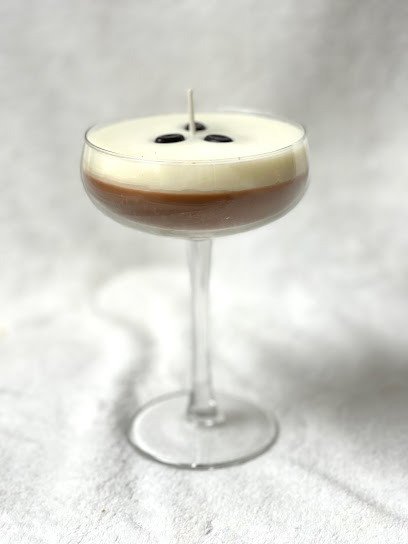
Billimay
Explore Billimay, the enchanting toy store where imagination comes alive with a wide selection of toys and games for all ages.
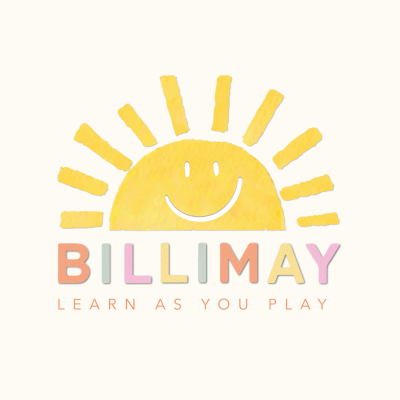
Jewellery Bar
Unearth unique jewellery pieces at Jewellery Bar, where local craftsmanship meets contemporary style in a vibrant shopping atmosphere.
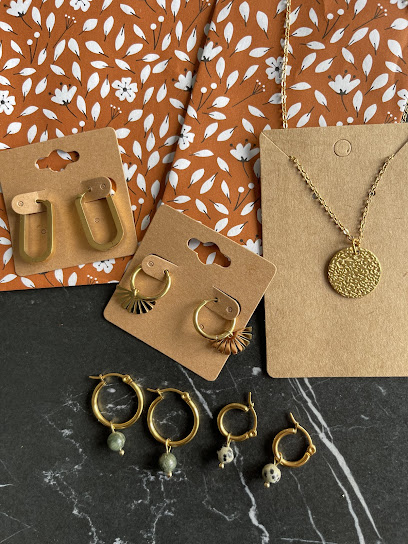
Belle Femme Jewelry
Discover exquisite handcrafted jewelry at Belle Femme Jewelry, blending elegance and local craftsmanship for an unforgettable shopping experience.
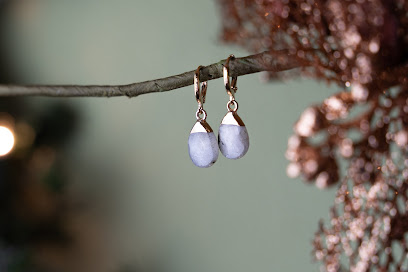
Walking In De Hoge Veluwe
Explore the enchanting landscapes of De Hoge Veluwe National Park, where nature and culture intertwine in a serene Dutch wilderness.
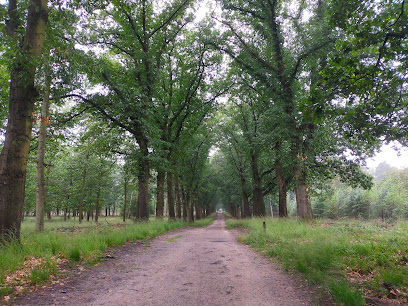
ffShoppen.nl
Explore ffShoppen.nl in Soesterberg for unique gifts, home goods, sporting equipment, and toys, all in a charming shopping environment.
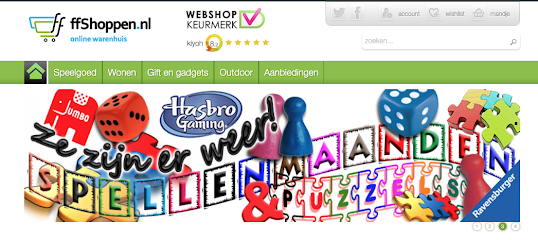
Seamossgoods
Discover the health benefits of sea moss at Seamossgoods, a unique store for wellness enthusiasts and tourists alike.
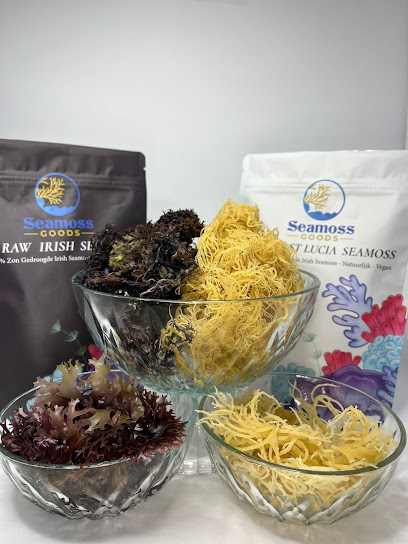
Landelijk & Zo
Explore Landelijk & Zo: A quaint gift shop offering unique local crafts and treasures for every traveler in a tranquil countryside setting.

This is from Mathilda
Explore 'This is from Mathilda', a charming dried flower shop offering unique floral arrangements and gifts that capture the beauty of nature.
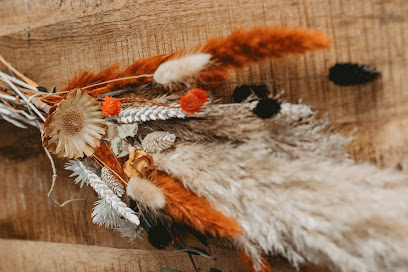
Pure Health Store
Explore eco-friendly beauty at Pure Health Store, the go-to destination for natural cosmetics and sustainable skincare solutions.

Essential bars & hidden hideouts
De Waldhoorn
Discover De Waldhoorn, a delightful restaurant in Otterlo, where local flavors meet a cozy atmosphere for an unforgettable dining experience.
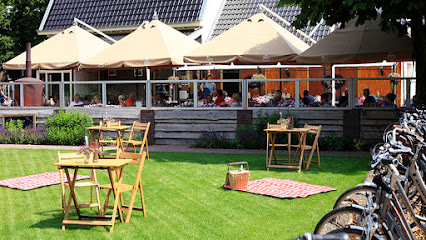
Iveau Burgers & Wijnbar
Discover Iveau Burgers & Wijnbar in Arnhem, where gourmet burgers meet a curated selection of fine wines in a cozy atmosphere.
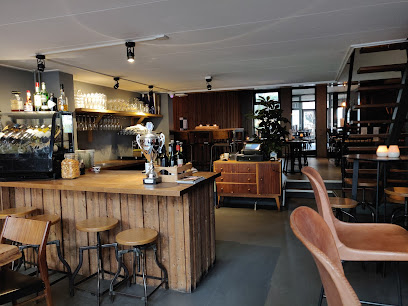
Hotel de Sterrenberg | Otterlo, Veluwe
Discover the tranquility of Hotel de Sterrenberg in Otterlo, your gateway to the captivating Veluwe National Park and unforgettable experiences.
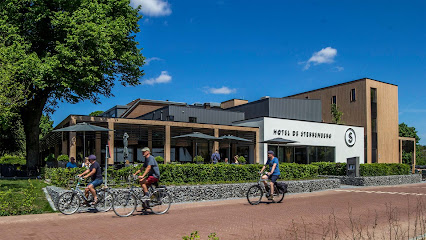
Dorpsherberg De Roskam
Discover the charm of Nunspeet at Dorpsherberg De Roskam, where traditional Dutch cuisine meets exceptional hospitality in a cozy setting.
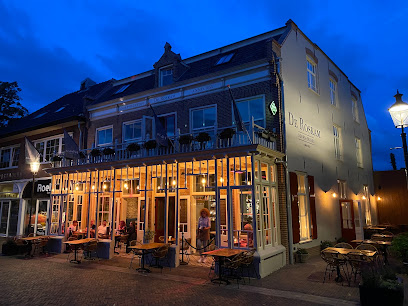
de Wever Lodge
Discover the charm of de Wever Lodge, a cozy hotel and restaurant in Otterlo, perfect for nature lovers and culinary enthusiasts alike.
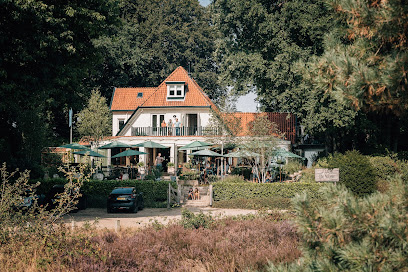
De Echoput
Experience the pinnacle of culinary excellence and luxurious accommodations at De Echoput, where nature meets gourmet indulgence.
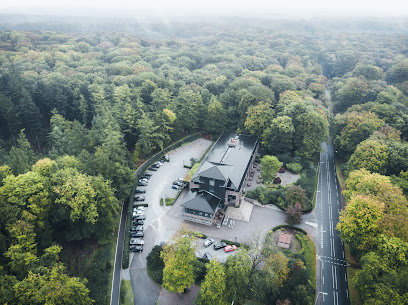
Herberg De Boer'Nkinkel
Experience the charm of Herberg De Boer'Nkinkel in Hoenderloo, where cozy accommodations meet delectable local cuisine amidst stunning nature.
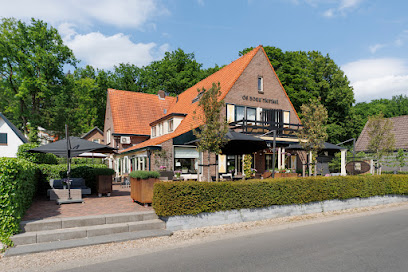
The Cavern Café
Discover The Cavern Café in Arnhem, where cozy ambiance meets a vibrant menu of drinks and delightful bites for an unforgettable experience.
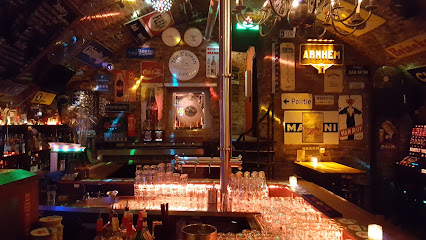
Café De Beugel
Discover Café De Beugel in Arnhem, a cozy bar with a unique beer selection and inviting atmosphere perfect for unwinding after a day of exploration.
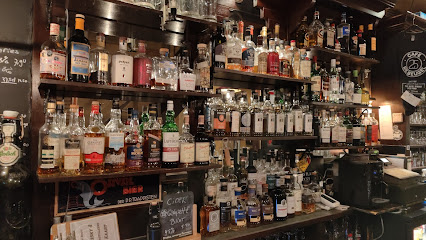
Restaurant De Hoge Veluwe
Experience the flavors of the Hoge Veluwe at Restaurant De Hoge Veluwe, where local ingredients meet stunning natural beauty.

Restaurant Cèpes | Otterlo
Experience the essence of Dutch cuisine at Restaurant Cèpes in Otterlo, where locally sourced ingredients meet culinary artistry.
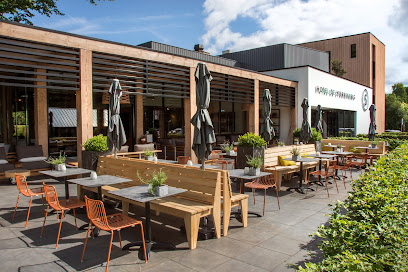
Garage Royal
Discover the vibrant atmosphere of Garage Royal, Arnhem's premier event venue blending bar, store, and culture in one unique location.
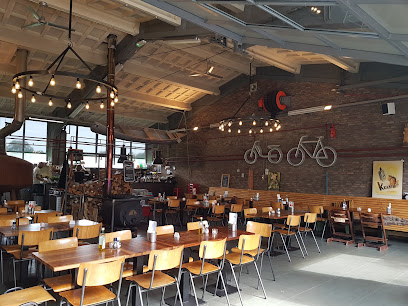
Café Bar Billiards Atlanta
Discover the vibrant Café Bar Billiards Atlanta in Arnhem - a perfect blend of café culture and bar entertainment for tourists seeking local leisure.
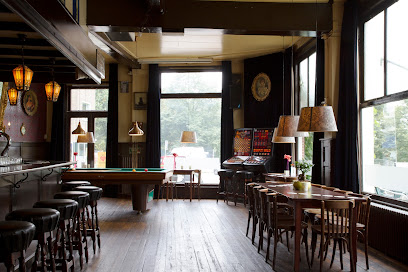
Park Paviljoen
Discover culinary delights amidst the beauty of nature at Park Paviljoen, a unique dining experience in Hoge Veluwe National Park.
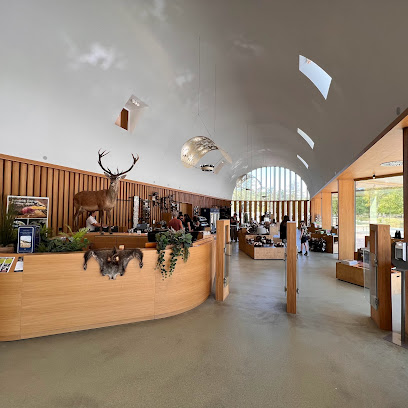
Juicy Lucy
Experience Arnhem's vibrant nightlife at Juicy Lucy, a lively pub and nightclub serving great drinks and electrifying music, perfect for tourists.

Local Phrases about Hoge Veluwe National Park
-
- HelloHallo
[HAH-loh] - GoodbyeTot ziens
[tot zeens] - YesJa
[yah] - NoNee
[nay] - Please/You're welcomeAlsjeblieft
[ahls-yuh-BLEEFT] - Thank youDank je
[dahnk yuh] - Excuse me/SorrySorry
[SOH-ree] - How are you?Hoe gaat het?
[hoo khahpt het] - Fine. And you?Goed. En met jou?
[khoot. en met yow] - Do you speak English?Spreek je Engels?
[spreyk yuh ENG-uhls] - I don't understandIk begrijp het niet
[ikh buh-KHREYP het neet]
- HelloHallo
-
- I'd like to see the menu, pleaseIk zou graag de menukaart willen zien, alsjeblieft
[ikh zow khraakh duh meh-noo-kahrt VIH-luhn zeen, ahls-yuh-BLEEFT] - I don't eat meatIk eet geen vlees
[ikh ayt khayn vlays] - Cheers!Proost!
[prohst] - I would like to pay, pleaseIk zou willen betalen, alsjeblieft
[ikh zow VIH-luhn buh-TAH-luhn, ahls-yuh-BLEEFT]
- I'd like to see the menu, pleaseIk zou graag de menukaart willen zien, alsjeblieft
-
- Help!Help!
[help] - Go away!Ga weg!
[gah wekh] - Call the Police!Bel de politie!
[bel duh poh-LEE-see] - Call a doctor!Bel een dokter!
[bel ayn DAHK-tuhr] - I'm lostIk ben verdwaald
[ikh ben vuhr-DWAAHLT] - I'm illIk ben ziek
[ikh ben zik]
- Help!Help!
-
- I'd like to buy...Ik wil graag kopen...
[ikh vil khraakh KOH-puhn] - I'm just lookingIk kijk alleen maar
[ikh kayk AHL-uhn mahr] - How much is it?Hoeveel kost het?
[HOO-vayl kohst het] - That's too expensiveDat is te duur
[daht is tuh dyur] - Can you lower the price?Kunt u de prijs verlagen?
[kunt oo duh prays vuh-RAH-ghuhn]
- I'd like to buy...Ik wil graag kopen...
-
- What time is it?Hoe laat is het?
[hoo laht is het] - It's one o'clockHet is een uur
[het is ayn uhr] - Half past (10)Half elf
[hahlf elf] - MorningOchtend
[OHK-tuhnt] - AfternoonMiddag
[MIH-dahkh] - EveningAvond
[AH-vohnt] - YesterdayGisteren
[GIHS-tuh-ruhn] - TodayVandaag
[vahn-dahkh] - TomorrowMorgen
[MOHR-ghuhn] - 1Een
[ayn] - 2Twee
[tway] - 3Drie
[dree] - 4Vier
[feer] - 5Vijf
[vayf] - 6Zes
[zehs] - 7Zeven
[zay-vuhn] - 8Acht
[ahkht] - 9Negen
[nay-guhn] - 10Tien
[teen]
- What time is it?Hoe laat is het?
-
- Where's a/the...?Waar is de...?
[vahr is duh] - What's the address?Wat is het adres?
[vaht is het AH-druhs] - Can you show me (on the map)?Kunt u mij laten zien (op de kaart)?
[kunt oo may LAH-tuhn zeen (op duh kahrt)] - When's the next (bus)?Wanneer is de volgende (bus)?
[VAH-nuhr is duh vohl-HUHN-duh (buhs)] - A ticket (to ....)Een kaartje (naar ....)
[ayn KAHR-chuh (nar)]
- Where's a/the...?Waar is de...?
History of Hoge Veluwe National Park
-
The area now known as Hoge Veluwe National Park was formed during the last Ice Age, around 150,000 years ago. The glaciers shaped the landscape, resulting in the diverse terrain of sand dunes, heathlands, and forests. Early human activity in the region dates back to the Mesolithic period, with evidence of hunter-gatherer communities who thrived in these environments.
-
During the medieval period, the Hoge Veluwe region saw the emergence of small settlements and the rise of agricultural practices. Communities were primarily engaged in farming, livestock rearing, and forestry. The landscape was significantly altered by human activity, particularly through the practice of heathland creation to support grazing and crop cultivation.
-
In the 17th and 18th centuries, the Hoge Veluwe area became popular among the Dutch elite, who established grand estates and hunting lodges. Wealthy landowners, including nobility and merchants, purchased large tracts of land for recreational and economic purposes. This period saw the construction of stately homes and the development of managed forests and gardens.
-
The early 20th century marked a significant chapter in the history of Hoge Veluwe with the involvement of Anton and Helene Kröller-Müller. Helene was an avid art collector, and together with her husband, they acquired large portions of the land to create a private hunting reserve and a sanctuary for art. Their vision led to the establishment of the Kröller-Müller Museum, which today houses an impressive collection of works by Vincent van Gogh and other artists.
-
During World War II, Hoge Veluwe National Park was occupied by German forces, causing considerable damage to the landscape and infrastructure. After the war, extensive efforts were made to restore the park. Reforestation projects and habitat restoration initiatives played a crucial role in reviving the natural beauty and ecological diversity of the area.
-
Hoge Veluwe National Park was officially established in 1935, thanks to the efforts of the Kröller-Müller family and Dutch government. The park spans approximately 55 square kilometers and is one of the largest continuous nature reserves in the Netherlands. Its establishment aimed to protect the unique landscape, flora, and fauna, and to provide a space for public recreation and education.
-
Today, Hoge Veluwe National Park is a cultural and ecological treasure, attracting visitors from around the world. It is renowned for its rich biodiversity, including red deer, wild boar, and rare bird species. The park also features a network of cycling paths, walking trails, and educational programs that highlight its historical and cultural heritage. The Kröller-Müller Museum remains a central attraction, offering a unique blend of nature, art, and history.
Hoge Veluwe National Park Essentials
-
Hoge Veluwe National Park is located in the Gelderland province of the Netherlands. The nearest major city is Arnhem, which is well-connected by train and bus services from major Dutch cities such as Amsterdam, Utrecht, and Rotterdam. From Arnhem, you can take a bus to the park entrance at Otterlo. Alternatively, you can drive to the park, with ample parking available at the entrances.
-
Within Hoge Veluwe National Park, the best way to get around is by bicycle. The park offers free white bicycles at various points, which you can use to explore the extensive network of cycling paths. Walking is also a popular option for shorter distances. If you prefer to drive, there are clearly marked roads throughout the park, but some areas are restricted to bicycles and pedestrians only.
-
The currency in the Netherlands is the Euro (€). Credit and debit cards are widely accepted within the park, including at the park entrances, the visitor centers, and the Kröller-Müller Museum. It is advisable to carry some cash for smaller purchases or in case of technical issues with card payments. ATMs are available in nearby towns like Otterlo and Hoenderloo.
-
Hoge Veluwe National Park is generally very safe for tourists. However, it is important to stay on marked paths to avoid getting lost or disturbing wildlife. There are no high-crime areas within the park targeting tourists, but it is always wise to keep an eye on your belongings, particularly in crowded areas like the visitor centers. At night, the park is closed to visitors, so plan your visit accordingly.
-
In case of emergency within Hoge Veluwe National Park, you can contact the park rangers or visitor centers for assistance. The general emergency number in the Netherlands is 112, which you can call for police, fire, or medical emergencies. It is advisable to carry a fully charged mobile phone during your visit. For minor health issues, first aid kits are available at the visitor centers.
-
Fashion: Do wear comfortable clothing and sturdy shoes suitable for walking or cycling. Don't wear flashy or overly formal attire, as the park is a casual, outdoor environment. Religion: The park is secular, but do respect any historical or cultural sites you may encounter. Public Transport: Do use public transportation to reduce your carbon footprint. Don't litter; use designated trash bins. Greetings: Do greet people with a smile or a friendly 'Hallo'. The Dutch are generally informal. Eating & Drinking: Do try the local delicacies available at the park's cafes. Don't leave food waste behind; it can attract wildlife.
-
To experience Hoge Veluwe National Park like a local, visit during the early morning or late afternoon to avoid the crowds. Take a picnic and enjoy it at one of the scenic spots within the park. Engage with the park rangers and staff, as they are knowledgeable and often willing to share insights about the park's flora and fauna. Don't miss the Kröller-Müller Museum, which houses an impressive collection of Van Gogh paintings and modern sculptures.
Trending Landmarks in Hoge Veluwe National Park
-
Het Nationale Park De Hoge Veluwe
-
Kröller-Müller Museum
-
Nationaal Park Veluwezoom
-
Paleispark Kroondomein Het Loo
-
Veluwe
-
Country Residence Museum Jachthuis Sint Hubertus
-
Loenense waterval
-
Uitkijktoren Kootwijkerzand
-
Bostoren
-
estate Schovenhorst
-
Planken Wambuis
-
Museonder
-
Het Kootwijkerzand
-
Estate Beekhuizen
-
Kasteel Oldenaller
Nearby Cities to Hoge Veluwe National Park
-
Things To Do in Nijmegen
-
Things To Do in Amersfoort
-
Things To Do in Utrecht
-
Things To Do in Zwolle
-
Things To Do in Amsterdam
-
Things To Do in Eindhoven
-
Things To Do in Haarlem
-
Things To Do in Leiden
-
Things To Do in Rotterdam
-
Things To Do in Delft
-
Things To Do in The Hague
-
Things To Do in Essen
-
Things To Do in Dusseldorf
-
Things To Do in Munster
-
Things To Do in Genk










